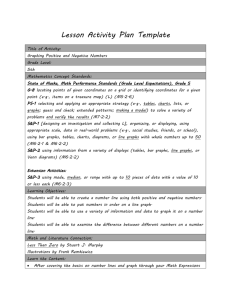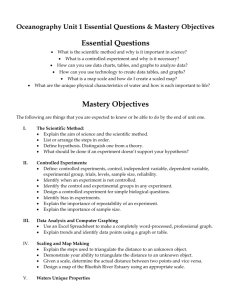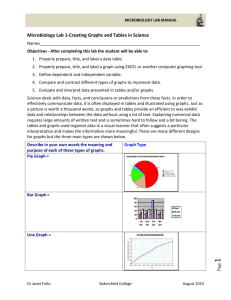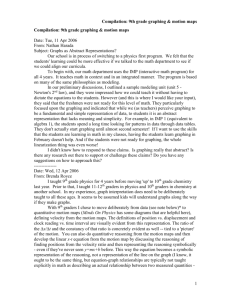TITLE: M&M Graphing and Probability
advertisement
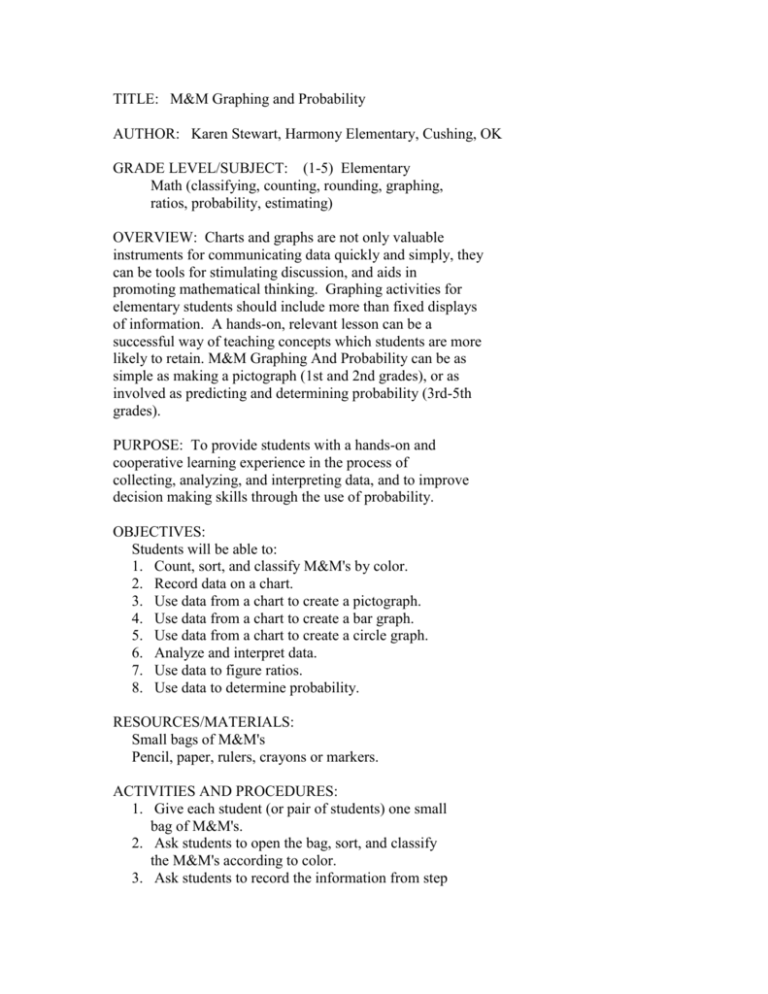
TITLE: M&M Graphing and Probability AUTHOR: Karen Stewart, Harmony Elementary, Cushing, OK GRADE LEVEL/SUBJECT: (1-5) Elementary Math (classifying, counting, rounding, graphing, ratios, probability, estimating) OVERVIEW: Charts and graphs are not only valuable instruments for communicating data quickly and simply, they can be tools for stimulating discussion, and aids in promoting mathematical thinking. Graphing activities for elementary students should include more than fixed displays of information. A hands-on, relevant lesson can be a successful way of teaching concepts which students are more likely to retain. M&M Graphing And Probability can be as simple as making a pictograph (1st and 2nd grades), or as involved as predicting and determining probability (3rd-5th grades). PURPOSE: To provide students with a hands-on and cooperative learning experience in the process of collecting, analyzing, and interpreting data, and to improve decision making skills through the use of probability. OBJECTIVES: Students will be able to: 1. Count, sort, and classify M&M's by color. 2. Record data on a chart. 3. Use data from a chart to create a pictograph. 4. Use data from a chart to create a bar graph. 5. Use data from a chart to create a circle graph. 6. Analyze and interpret data. 7. Use data to figure ratios. 8. Use data to determine probability. RESOURCES/MATERIALS: Small bags of M&M's Pencil, paper, rulers, crayons or markers. ACTIVITIES AND PROCEDURES: 1. Give each student (or pair of students) one small bag of M&M's. 2. Ask students to open the bag, sort, and classify the M&M's according to color. 3. Ask students to record the information from step 4. 5. 6. 7. 8. 9. 2 on a chart. After illustrating various pictographs, ask students to use their data to create their own pictograph. Compare graphs. Have students discuss the differences and the similarities of the graphs. Have class form small groups of 4-6. (possibly by rows in the classroom) Ask the groups to combine their data and make a new chart illustrating the results. After discussing bar graphs, ask the groups to create and color a bar graph using the new figures. Compare this graph to the individual pictographs. Are the ratios the same. Ask the groups to combing all of the data to include on a class chart. Round the numbers to the nearest tens for ease in creating a circle graph. You may want to do this together on the board or an overhead projector. Ask students to determine the ratio of each color of M&M to the entire bag. With this information, the students can predict the probability of selecting one color at random from a large bag. How many of each color would be likely to be found in a handful of 10, of 20? Try it. Discuss the results. Then enjoy the M&M's. TYING IT ALL TOGETHER: Probability is an important decision-making tool. Teaching students to successfully use data from charts or graphs to predict probability will improve their decision- making skills. A hands-on approach will help students apply the concepts of graphing, and probability to other problem solving and risk-taking situations. ADDITIONAL ACTIVITIES: 1. Get the students thinking in another direction. Ask them why they think the makers of M&M's make more brown ones than green. Write a creative essay about it. 2. Have students research to find out why there was a period of years that no red M&M's were made. When did they start including red M&M's in the packages again?



